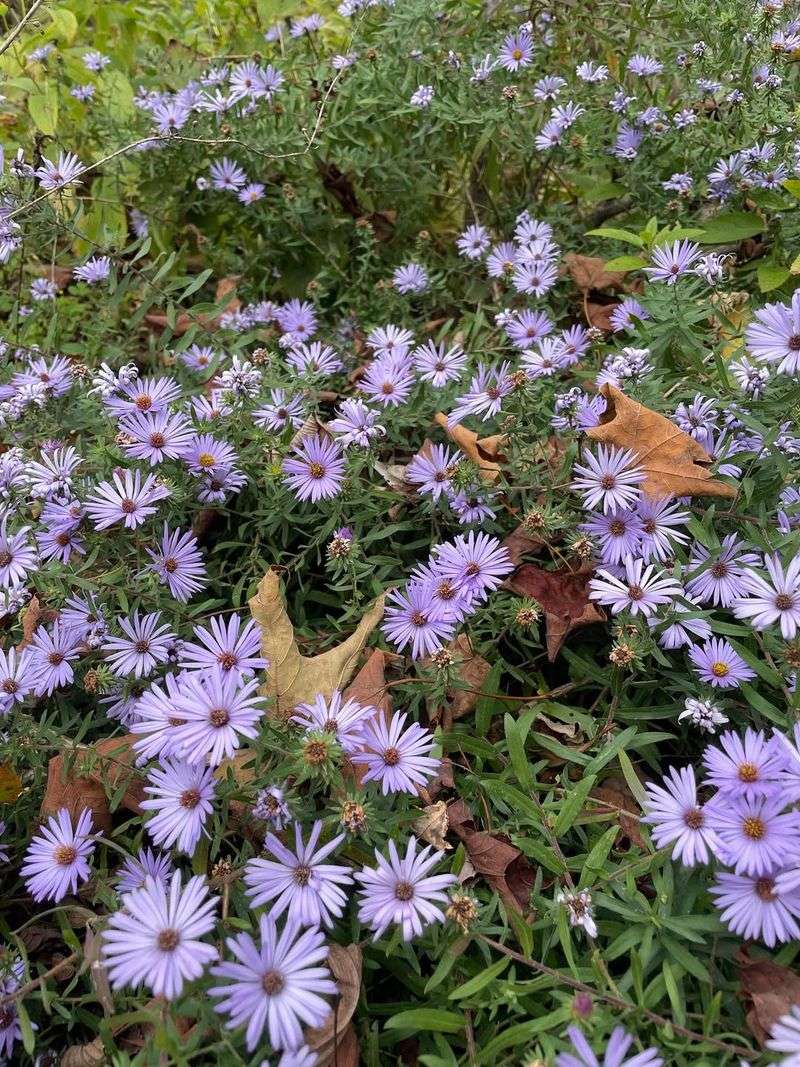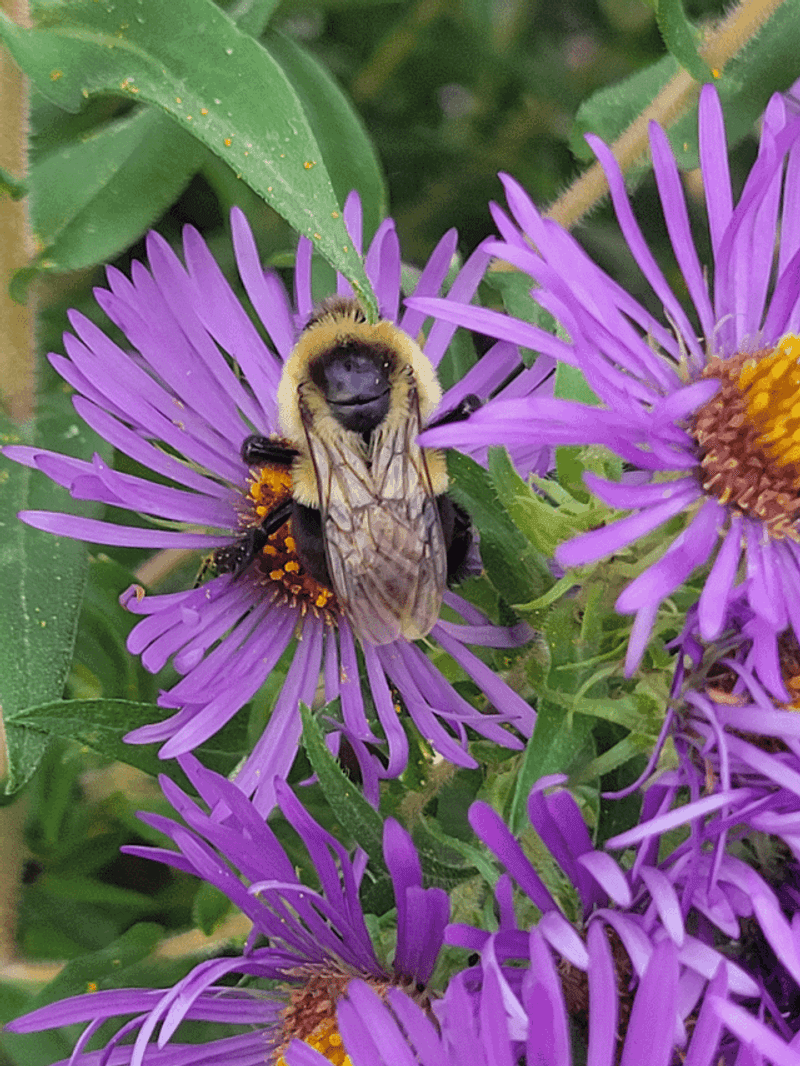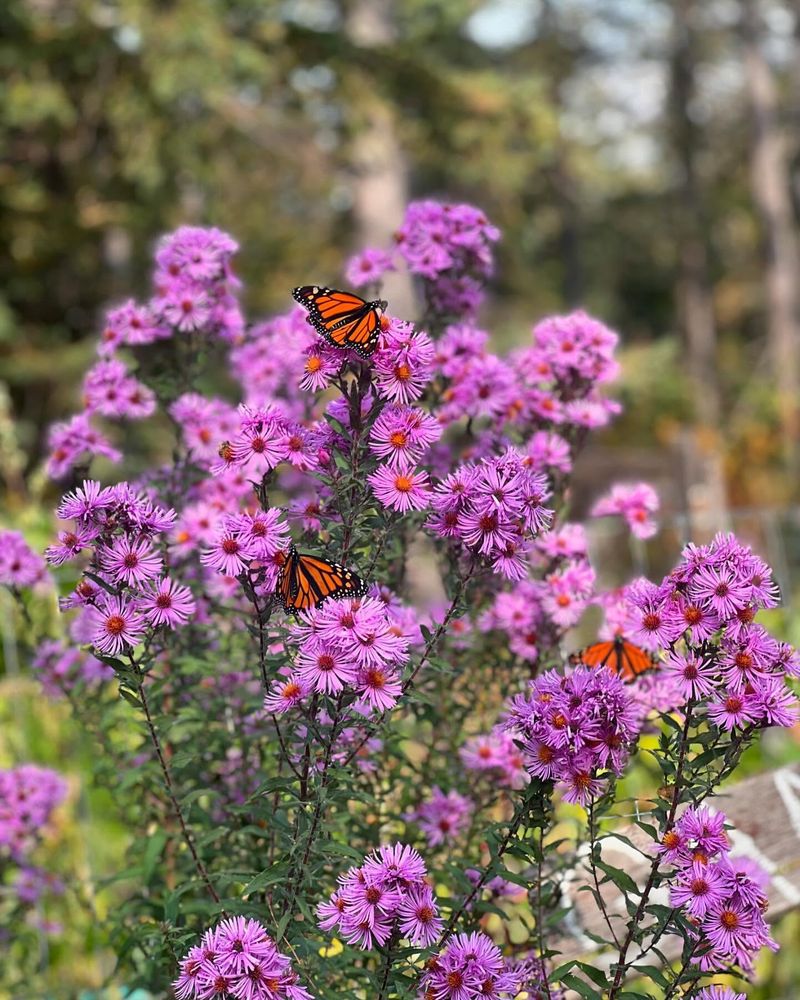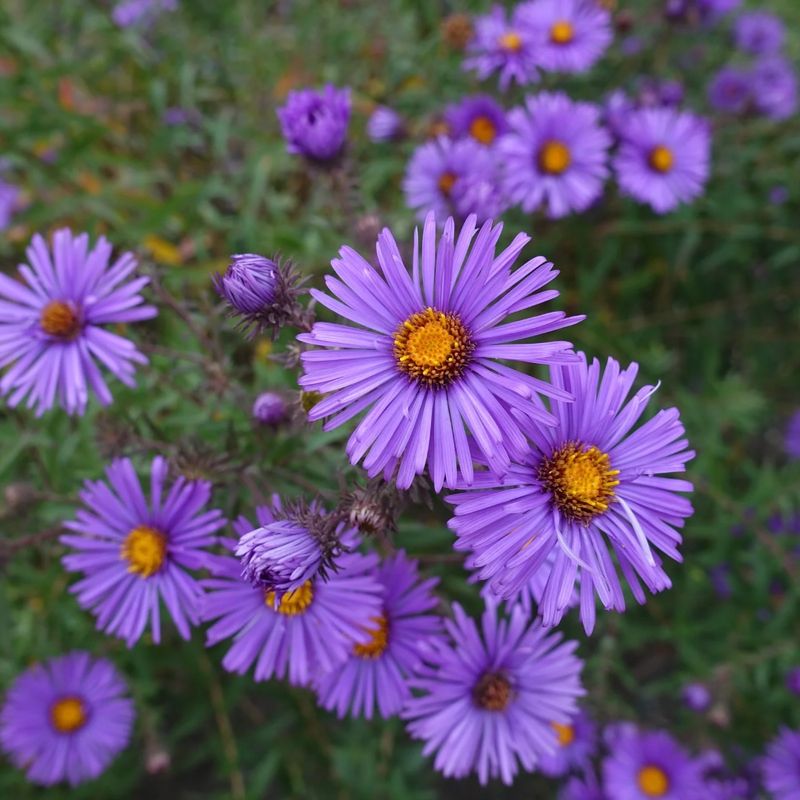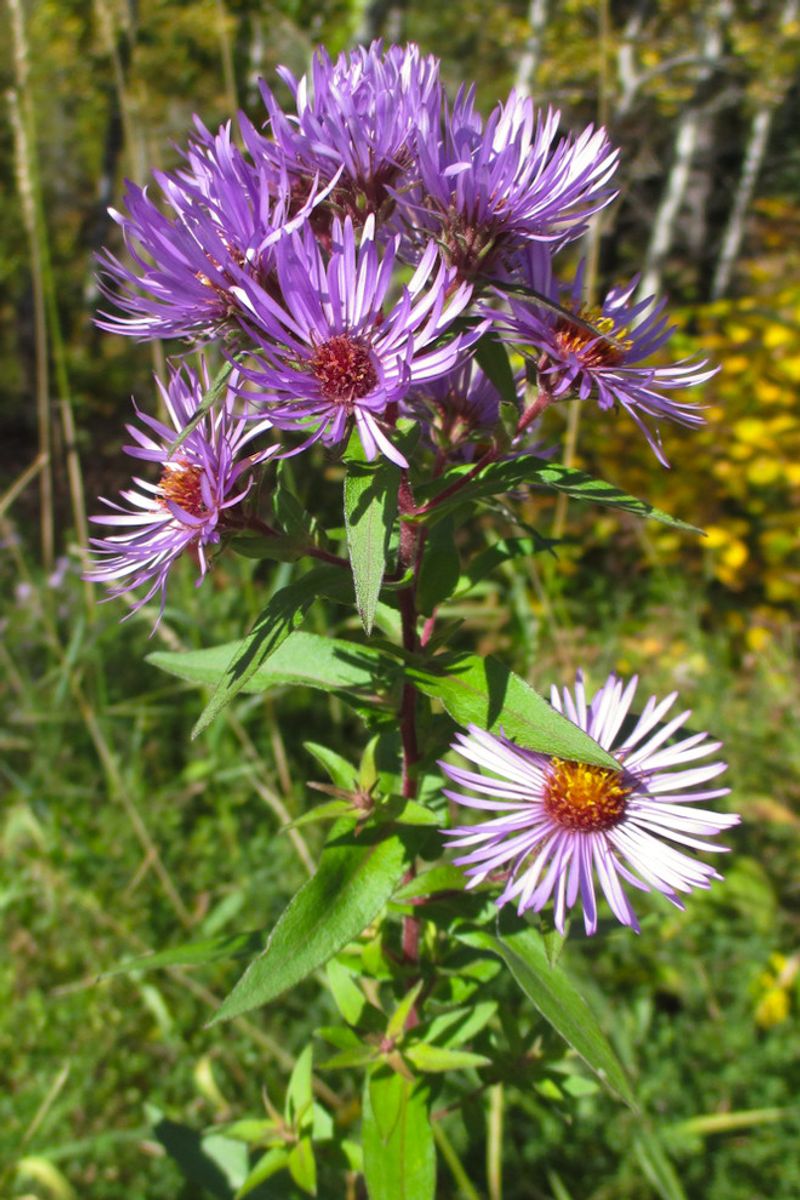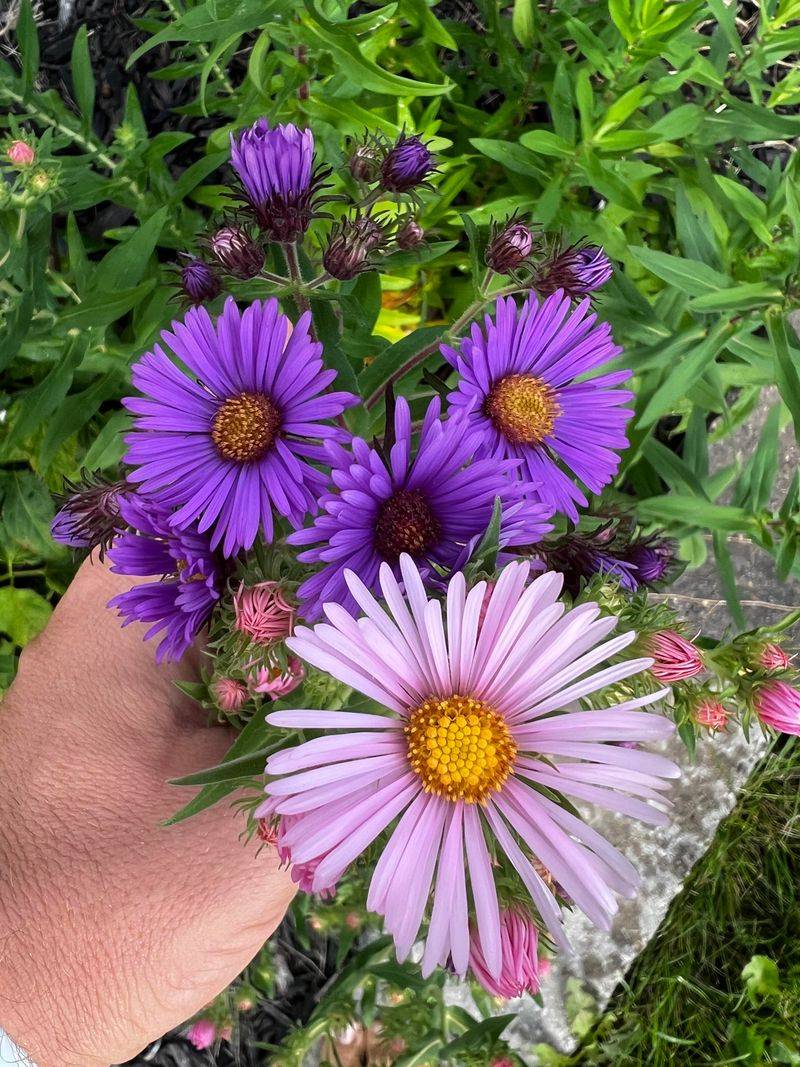A burst of late-season color can turn an Ohio garden into a magnet for every bee in the neighborhood. As cooler air settles in and many blossoms fade, one native standout still calls out like a beacon.
Its bold purple petals and sunny centers draw pollinators with the pull of a porch light on a summer night. Gardeners who welcome this showstopper soon notice a steady buzz that signals a healthy, lively yard—proof that the New England aster knows how to steal the spotlight when other plants bow out.
Native Ohio Wildflower With Deep Roots
Long before gardens existed in Ohio, New England Aster bloomed wild across meadows and prairies throughout the region. Its natural presence means it already knows how to thrive in local soil and weather conditions without demanding extra care.
Native plants like this aster have adapted over thousands of years to work perfectly with Ohio’s climate. They require less water, fewer fertilizers, and minimal maintenance compared to imported species that struggle to adjust to our environment.
Late-Season Bloomer When Bees Need Help Most
While many flowers fade by late summer, New England Aster bursts into bloom from August through October. This timing is critical because bees desperately need nectar sources before cold weather arrives and food becomes scarce.
Honeybees, bumblebees, and native solitary bees all flock to these purple flowers during fall. By planting asters, you create a vital feeding station that helps bee populations build energy reserves for winter survival and ensures they stay healthy year-round.
Eye-Catching Purple Blooms That Light Up Gardens
Picture hundreds of daisy-like flowers covering a plant in brilliant shades of purple, violet, and magenta. New England Aster creates this spectacular show, with each bloom featuring a golden-yellow center surrounded by delicate petals.
The flowers grow in thick clusters that create a stunning visual impact from across your yard. Standing three to six feet tall, these plants become focal points that draw both human admirers and pollinator visitors throughout the autumn season.
Tough Plant That Handles Ohio Weather Extremes
Ohio’s unpredictable weather doesn’t faze this hardy perennial one bit. New England Aster survives scorching summer heat, sudden cold snaps, and everything in between without wilting or giving up on blooming.
Once established in your garden, these plants return year after year, growing stronger with each season. They tolerate clay soil, resist most diseases, and bounce back from drought conditions that would destroy more delicate flowers, making them perfect for busy gardeners.
Perfect Height For Garden Borders And Backgrounds
Reaching heights between three and six feet, New England Aster works wonderfully as a backdrop for shorter plants or along fence lines. Its tall stature creates vertical interest without overwhelming smaller garden companions.
Gardeners love using these asters to hide unsightly areas like compost bins or utility boxes. The substantial height also makes them ideal for creating privacy screens that bloom beautifully while blocking unwanted views from neighbors or busy streets beyond your property.
Spreads Naturally to Fill Garden Spaces
Unlike aggressive invasive plants, New England Aster expands at a manageable pace through underground rhizomes. This spreading habit allows it to gradually fill empty spots in your garden, creating fuller, more lush displays over time.
You can easily control its growth by dividing clumps every few years in spring or fall. These divisions make free plants to share with neighbors or expand your own bee-friendly garden areas without spending extra money at nurseries.
Supports Butterflies And Other Beneficial Insects
Beyond bees, New England Aster attracts monarchs, swallowtails, and dozens of other butterfly species searching for nectar during migration. Ladybugs and lacewings also visit these plants, helping control garden pests naturally.
The flowers provide landing platforms where beneficial insects rest and refuel. Creating this insect-friendly habitat strengthens your garden’s ecosystem, reducing the need for pesticides while supporting the complex web of life that keeps outdoor spaces healthy and balanced throughout every season.
Simple Care Requirements For Beginner Gardeners
Even if you’ve never grown anything before, New England Aster forgives mistakes and thrives with minimal effort. Plant it in full sun, give it average soil, and water occasionally during dry spells—that’s basically all it needs.
No complicated fertilizing schedules or special treatments are required for success. Cutting stems back in late fall keeps plants tidy, but even skipping this step won’t harm them. This forgiving nature makes asters ideal for anyone wanting to start a pollinator garden without feeling overwhelmed.


